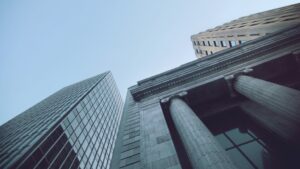
Credit Spotlight on US Technology
Rising default risks and credit divergence signal a potential shakeout in the tech sector amid volatile returns and shifting global dynamics.
Focus your attention where and when it matters most with access to the largest and most timely source of credit risk data globally.

Credit Benchmark provides a data-driven view of credit risk, offering coverage, detail, and collective insight available nowhere else. First, we collect the entity-level credit risk views of the world’s leading financial institutions. Next, we map, cleanse, anonymize and aggregate these raw contributions to create a ‘credit consensus’, delivered to our clients weekly.
The resulting Credit Consensus Ratings, Indices & Analytics are an entirely unique product backed by real-world market sentiment. Rather than the 'issuer pay model', it represents the views of those with 'skin in the game'.
Learn more ➔

Complex risk decisions are supported by easy access to 110,000+ Credit Consensus Ratings, 130,000+ bond and loan rating assessments, 1,200+ sector indices, and a suite of in-depth analytics - available via Web App, Excel add-in, API, flat-file download, and partner channels including Bloomberg.
Risk professionals at banks, insurance companies, asset managers, and other firms use the data to gain visibility on entities without a public rating, monitor and benchmark portfolios, assess and analyze credit trends, inform risk sharing transactions, and fulfil regulatory requirements.
Learn more ➔

Rising default risks and credit divergence signal a potential shakeout in the tech sector amid volatile returns and shifting global dynamics.

Credit Benchmark’s consensus credit data provides an unparalleled view of Italian default risk through a

The global credit outlook is deteriorating for a range of industries as international trade confrontation

This is the first joint update on the Significant Risk Transfer (SRT) market from Credit

Rising defense budgets and investment in new technologies are seeing a boost to the credit
Credit Benchmark brings together internal credit risk views from over 40 leading global financial institutions. The contributions are anonymized, aggregated, and published in the form of consensus ratings and aggregate analytics to provide an independent, real-world perspective of credit risk. Risk and investment professionals at banks, insurance companies, asset managers and other financial firms use the data for insights into the unrated, monitoring and alerting within their portfolios, benchmarking, assessing and analyzing trends, and fulfilling regulatory requirements and capital.
Please complete the form below to arrange a demo.